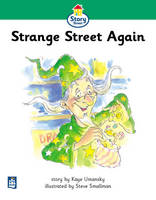conference curriculum EFL expectations JALT language courses Language learning presentations readers Reading teaching theory university
by sendaiben
leave a comment
Extensive Reading Seminar 2011
I just got back from the 2011 ER Seminar, held in Okayama this year.
Had a good time, attended some useful presentations, and saw a bunch of great people. The best conference I have been to in a long time. Especially enjoyed the plenaries and Nakano sensei’s presentation. Got some actionable ideas to adopt(steal) for my classes.
Okayama also seemed like a nice place during the very limited time I was there 🙂
Miles Grogan was kind enough to shoot my presentation for me with my iPhone, so I have finally managed to upload one of my presentations to Youtube:
The quality is not great, but you get the idea. Here are the slides:
curriculum EFL eikaiwa ES kids language courses readers Reading school management teaching Uncategorized
by sendaiben
2 comments
Story Street
I had a chance to check out Story Street (from Longman) this week. As you may know, I am a huge fan of reading and we use a huge range of readers in our kids classes, but I never had the chance to look at it properly before (I had glanced through it in a bookshop once, but didn’t really like the illustrations).
I was pleasantly surprised. I tried levels 1, 3, 6, and 10 and they were well-received by students. In fact, our students rated them higher than the Follifoot Farm readers (my personal favorite for making the jump from phonics to reading). Of course, FF is a series designed to provide decoding practice, so it is perhaps unfair to compare it to a full on kids reader series, but still, I was taken aback.
The stories are fun, the characters and situations develop as the levels progress, and the steps between levels are handled well. In fact, I liked the series so much that we’ll be introducing it to our classes as supplementary reading material.
There are a few things I don’t like:
-there are not enough books at each level, which means that we couldn’t use it as our main reading resource
-there are no word counts available, either on the books nor from the publisher
-the list of books for each level on the back of the books is wrong, as certain titles are out of print (this will be a problem when sharp-eyed kids notice that they haven’t read ‘all the books’)
None of these are huge problems, but they do mean that Story Street comes across as a little less polished than, say, the Oxford Reading Tree. Still, I’m looking forward to having our students explore the Street in the new year. I’ll report back after we’ve used it for a while.
curriculum EFL expectations language courses Language learning teaching theory
by sendaiben
2 comments
Best practice in teaching (are we doing enough?)
A great TED talk, courtesy of Marcos Benevides’ blog.
conference curriculum EFL eikaiwa ES expectations kids language courses Language learning presentations Reading teaching teaching culture Uncategorized
by sendaiben
leave a comment
Power Seminar in Nagoya
I went to the latest Power Seminar in Nagoya last Sunday. It was a really long day (10-19:30) and studying for so long with short breaks really took its toll, but I really enjoyed the day and got a lot out of it. There were four presenters, each presenting for 90-120 minutes on their area of expertise.
Kim Horne, on Creating a Culture of Character in the Classroom;
Kaj Schwermer, on Teaching Children with Games and Activities;
Jeffrey Scott, on Dramaturgy and the Art of Classroom Management;
and Peter Warner, on The Four Stages of the English Alphabetic Code.
Overall, it was a great and well-organised event, and well worth the time and money.
curriculum EFL eikaiwa expectations language courses teaching theory
by sendaiben
2 comments
Is it good enough?
Following on from my post the other day reviewing Teach Like a Champion, I’d like to talk about expectations.
This was actually provoked by something Steve Kaufmann mentioned last week on his blog: The Linguist on Language
He was talking about how learners need to be taught how to learn a language, rather than taught the language, something I very much agree with. It ties in well with several things I have been thinking about recently, so I would like to run through them briefly here (warning: this is going to be vague and unfocused).
This article on teachers’ use of English in high schools in Japan provoked a lot of discussion online (see Steve Herder’s note):
“Less than 20 percent of public high schools have been enforcing an English-only rule in their English conversation classes during the 2010 school year according to a survey, causing alarm at the Ministry of Education, Culture, Sports, Science and Technology (MEXT).”
While I agree that English classes in public schools should have more opportunities for students to listen to and use the language, I think this prescription from MEXT misses the point somewhat. Forcing teachers in one class (oral communication in high schools) to use only English, while all other classes continue to be run the same way, will not make a huge difference and could even have the unwelcome side effect of further alienating students.
I believe that more teacher training (teachers at the moment get comparatively little training), better teaching materials (the New Horizon textbooks for JHS only contain a total of just over 6000 words of text, over three years!), more supplementary materials to provide students with reading and listening input, and a move away from sentence level discrete vocabulary and grammar items on entrance tests.
However, IMHO the biggest factor is expectations (which tie into motivation and all that good stuff). Japanese students, on the whole, just don’t expect to end up as competent users of English, nor do institutions or teachers have the mindset that most students will develop internationally viable skills.
The question in this post’s title is one that I was asking myself after class the other day. Unfortunately, for me, the answer was no. What I was doing in class with my students is not good enough. It’s not going to get them where they need to be and it’s not going to motivate them to go out and put in the time they need to become proficient. I’m not sure what I would have to do to get my class to an acceptable place, but I have some ideas for changes I will make next year.
How about you? Are your classes good enough?


